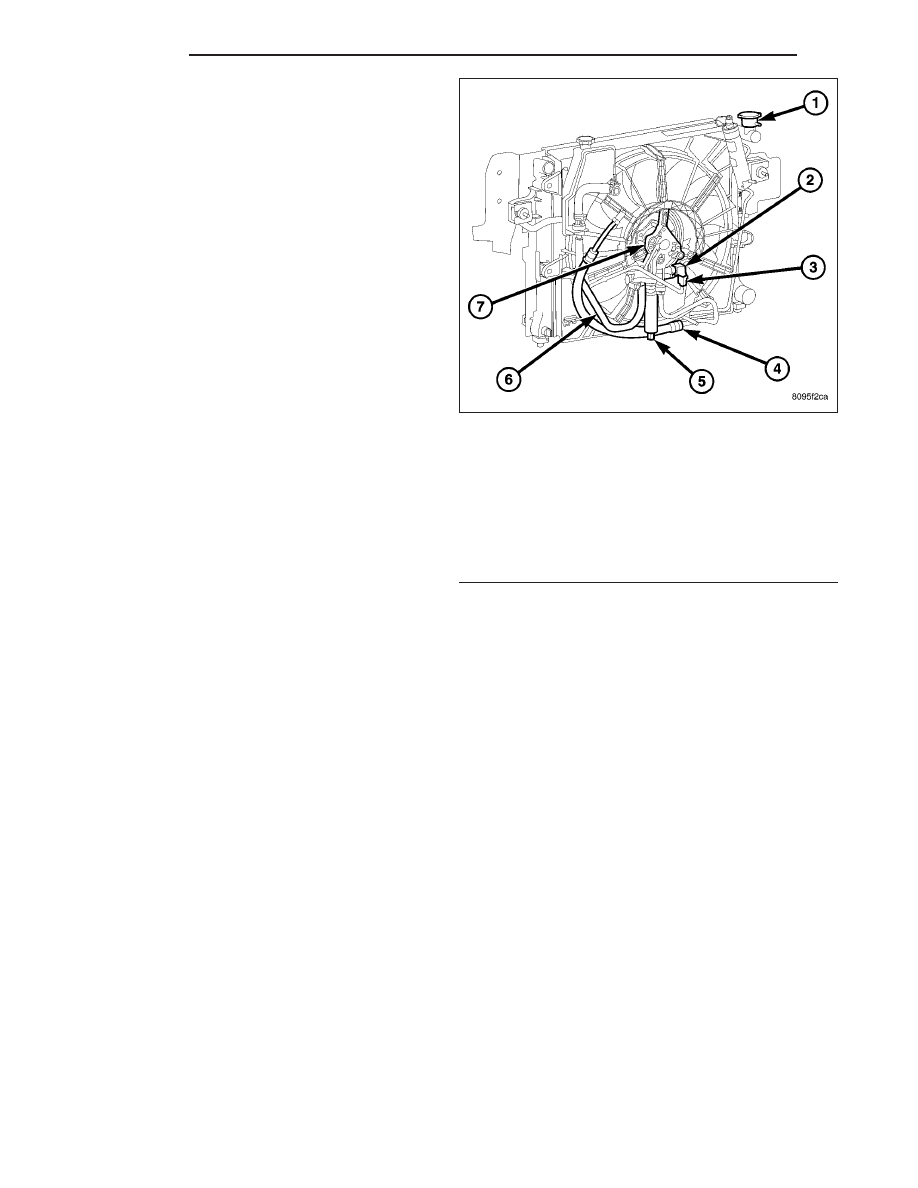Jeep Grand Cherokee WK. Manual - part 207

5.7L ENGINE The 5.7L hydraulic cooling fan is integral
to the fan shroud and is located between the radiator
and the engine.
The power steering pump supplies the hydraulic fluid
and pressure to rotate the cooling fan blade, while the
electrical part of the fan is controlled by the FCM.
The hydraulic fan drive (motor) consists of the three
major following components:
•
Steering flow control valve
•
Fan control valve
•
Two stage G-rotor hydraulic drive
The hydraulic fan and drive is not serviceable. There-
fore any failure of the fan blade, hydraulic fan drive or
fan shroud requires replacement of the fan module
because the fan blade and hydraulic fan drive are
matched and balanced as a system and servicing
either separately would disrupt this balance.
HYDRAULIC RADIATOR COOLING FAN AND FAN
DRIVE - 5.7L
1 - RADIATOR
2 - HYDRAULIC FAN MOTOR SOLNOID
3 - ELECTRICAL CONNECTOR
4 - HIGH PRESSURE LINE FROM HYDRAULIC FAN MOTOR TO
STEERING GEAR
5 - HIGH PRESSURE LINE
6 - RETURN LINE
7 - FAN MOTOR
7 - 34
ENGINE
WK